 It looks amazing, baby. Er... aaaand should look even better on my lovely wife. Thanks for letting me test it on your neck. 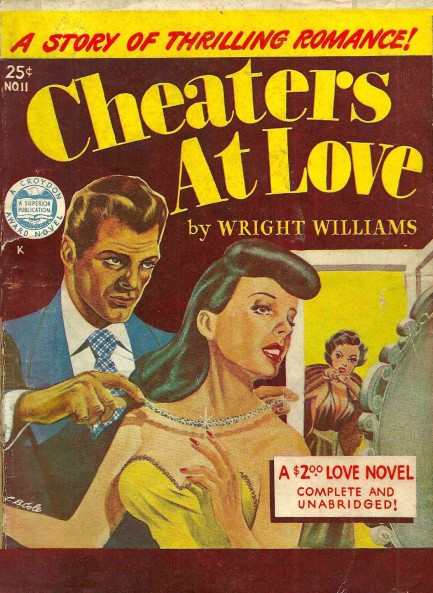
Sometimes when you're caught you're caught. You can try and brazen the moment out, but it usually does no good, at least in mid-century fiction. From there it's just a short distance to mayhem, murder, trials, prison, and all the other fun stuff that makes genre fiction worth reading. From James M. Cain's iconic The Postman Always Rings Twice to J.X. Williams' ridiculous The Sin Scene, infidelity is one of the most reliable and common plot devices. What isn't common is cover art that depicts the precise moment of being caught. Of all the cover collections we've put together, this was the hardest one for which to find examples, simply because there are no easy search parameters. We managed a grand total of sixteen (yes, there's a third person on the cover of Ed Schiddel's The Break-Up—note the hand pushing open the door). The artists here are L.B. Cole, Harry Schaare, Tom Miller, Bernard Safran, and others. And we have thre more excellent examples of this theme we posted a while back. Check here, here, and here.
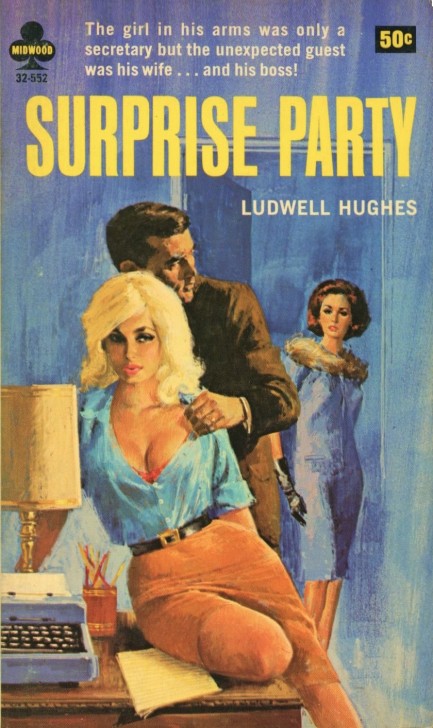 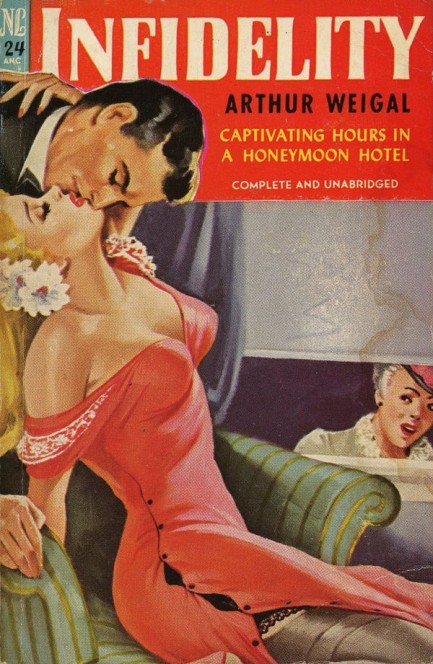  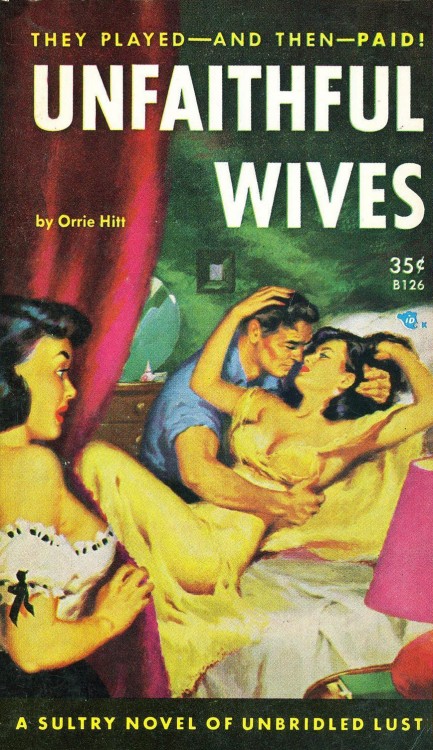 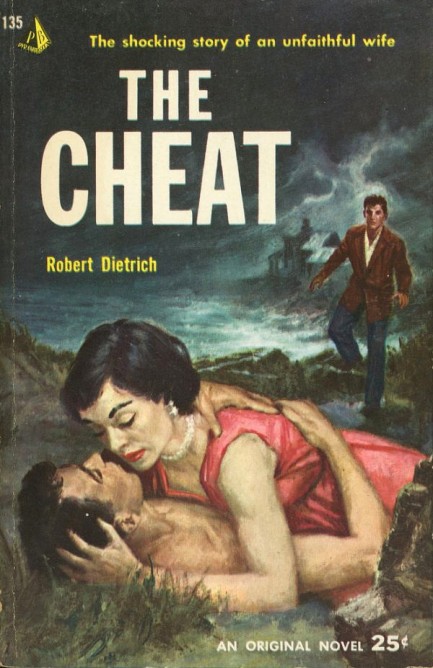 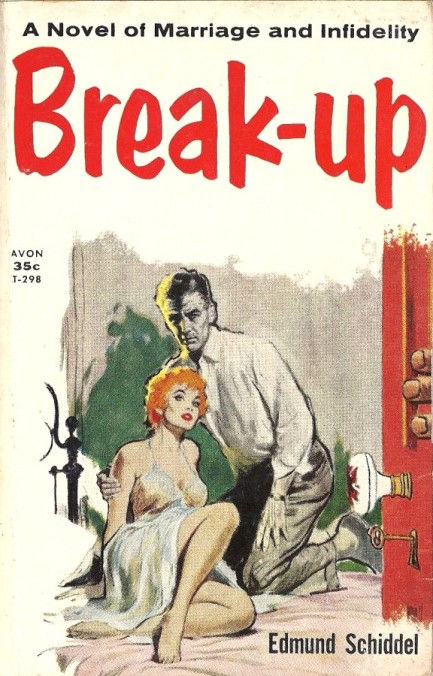 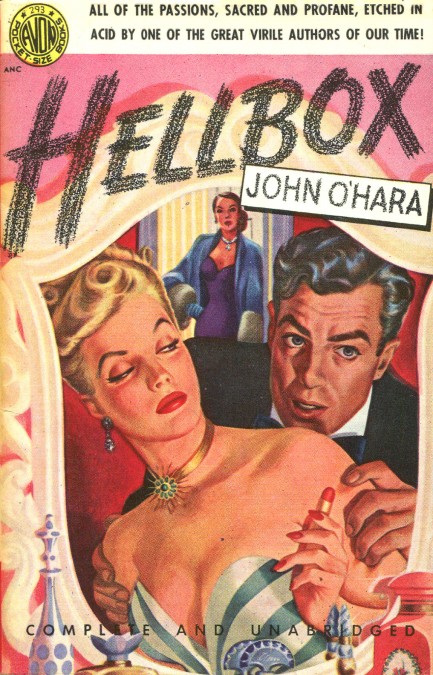 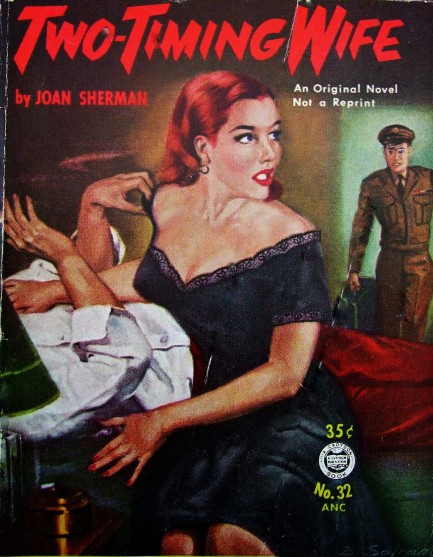 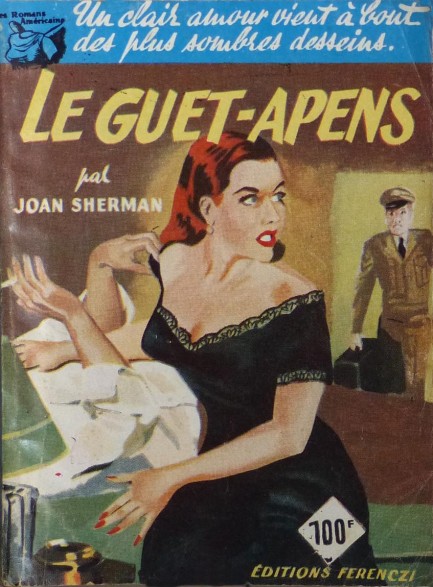 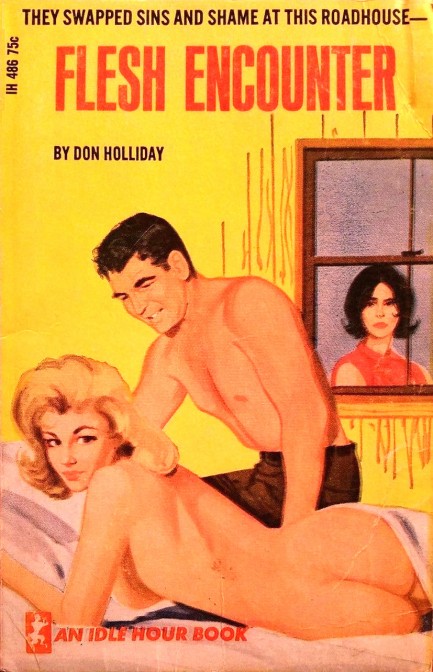 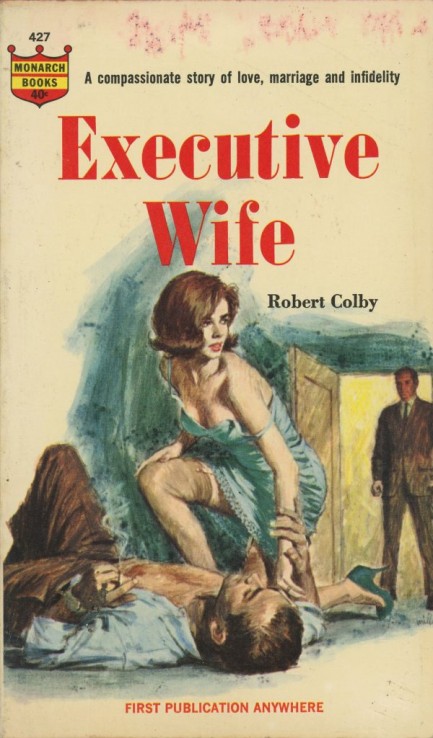  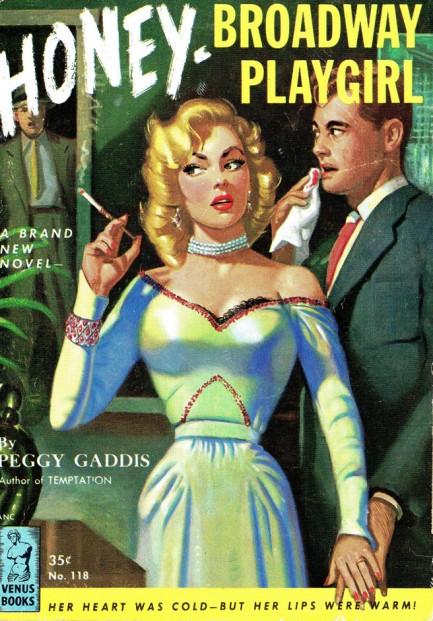 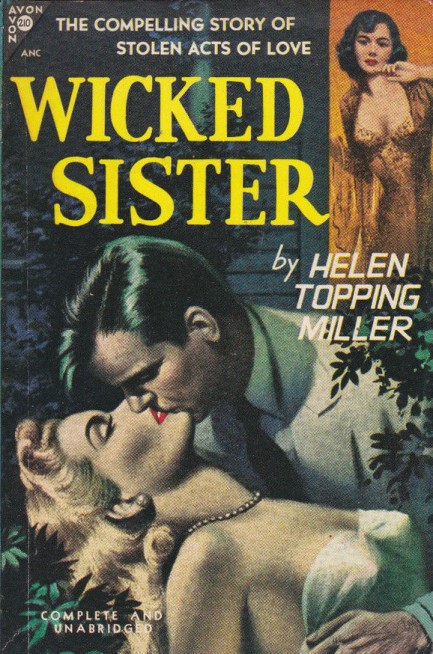 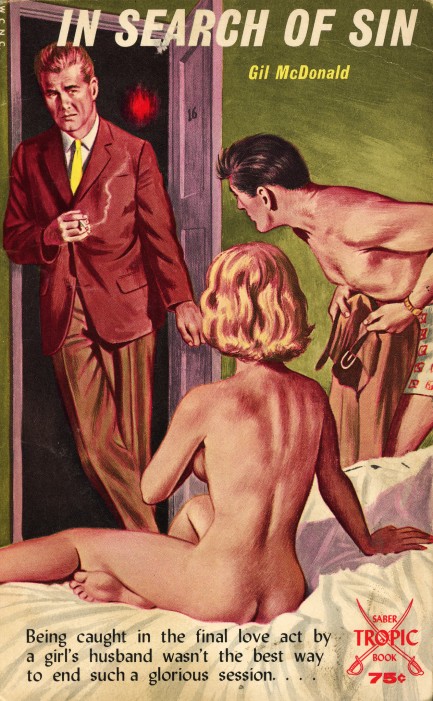
 Tough time on the front, and unwelcome back at home. 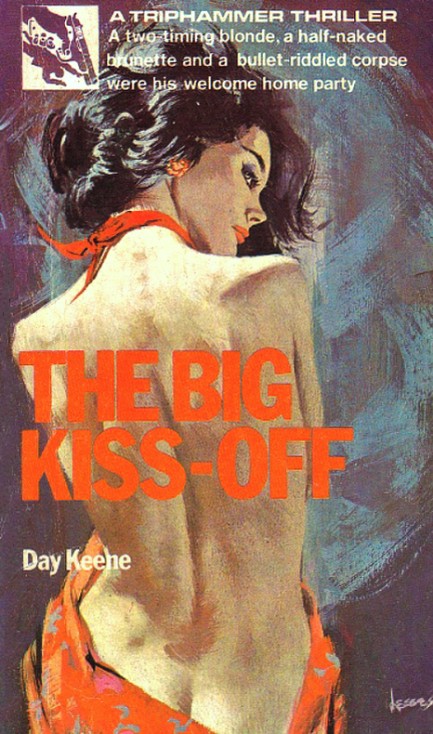
You'd never guess from the art, but The Big Kiss-Off deals with an Air Force pilot named Cade Cain who, after twelve years in Korea, returns to a life of boating around the Louisiana bayou and comes across the bodies of six Chinese men on an isolated mud flat. And on his first day back, too, which is pretty bad luck, even for a guy who got shot down and spent two years in a prison camp. He wants nothing to do with the bodies or whoever was responsible for putting them there, but somehow his old local nemesis learns of the find and before he knows it he's beaten, threatened, and told to leave town again—this time for good. Two fisted loners in mid-century fiction rarely take that sort of treatment laying down. When Cain learns that his wife has sold off his family's land, divorced him in absentia, and found comfort in his enemy's bed, something simply has to be done.
Before he gets his vengeful ducks in a row, a near-naked fugitive swims aboard his boat and the mystery deepens. Her name is Mimi Moran, because the alliteration is strong with this book. She's looking for her husband, who it happens is a pilot who flies illegal aliens into the U.S. for the bad guys. Cade Cain decides to help Mimi Moran and that's when the real trouble starts. The Big Kiss-Off is a solid yarn from Day Keene. It has the usual issues common to fiction of the 1950s, for example the hero having to constantly resist forcing himself on his beautiful passenger because he's “only human, after all.” Fortunately, even though “her flesh constantly attracted his hands like a magnet,” he contains himself—mostly. Not someone you'd want near your sister. Or any woman, really. But as a fictional hero he serves his purpose just fine.
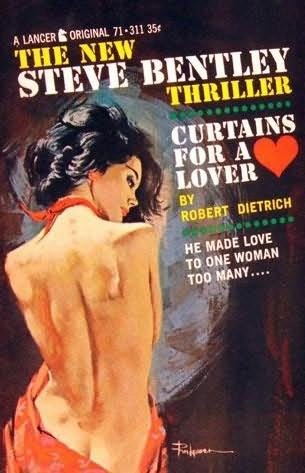 With a setting in the endlessly fertile (for genre fiction) Louisiana bayou, and a narrative that wastes no time putting Cain in hot water, The Big Kiss-Off keeps the pages turning. It originally appeared in 1954 but the above edition was published in 1972 by Triphammer Books in Britain, with nice art by Ron Lesser borrowed from Robert Dietrich's (E. Howard Hunt's) 1962 Lancer Books thriller Curtains for a Lover. Notice how Triphammer erased part of Lesser's distinctive signature. That was obviously to keep the figure on their cropped art from looking crowded by the lettering, but we imagine it still annoyed Lesser. You can see a U.S. cover for The Big Kiss-Off in this collection of Day Keene novels we put together back in 2009. With a setting in the endlessly fertile (for genre fiction) Louisiana bayou, and a narrative that wastes no time putting Cain in hot water, The Big Kiss-Off keeps the pages turning. It originally appeared in 1954 but the above edition was published in 1972 by Triphammer Books in Britain, with nice art by Ron Lesser borrowed from Robert Dietrich's (E. Howard Hunt's) 1962 Lancer Books thriller Curtains for a Lover. Notice how Triphammer erased part of Lesser's distinctive signature. That was obviously to keep the figure on their cropped art from looking crowded by the lettering, but we imagine it still annoyed Lesser. You can see a U.S. cover for The Big Kiss-Off in this collection of Day Keene novels we put together back in 2009.
 Okay, now you’re going feel a little prick. 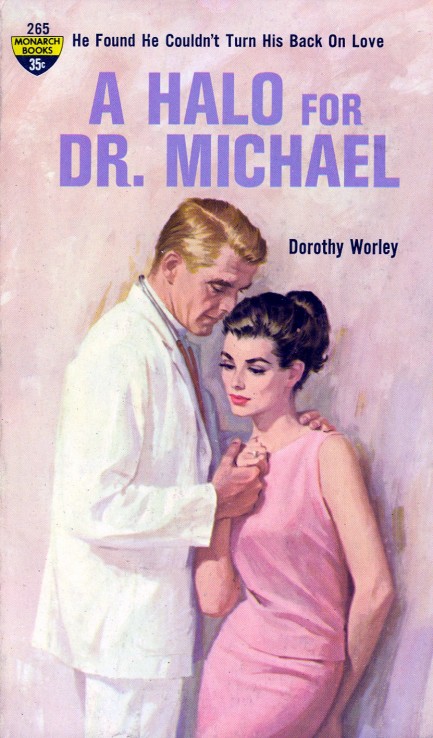
Did you ever see the movie Doc Hollywood? Well, 1962’s A Halo for Dr. Michael is the same sort of thing—i.e., a bright young doctor passes up a glittering career in the big city (Manhattan) and practices medicine in a small southern town. He learns a little about himself, and of course finds love. Author Dorothy Worley specialized in this stuff, churning out books such as Dr. John’s Decision, Dr. Jefferey’s Awakening (are you sensing a theme here?) Dr. Michael’s Challenge, and, for a change of pace, Cinderella Nurse. It’s cheeseball stuff, but sometimes only a medical romance will scratch that itch. The cover art, in all its overwhelming pinkness, is by Tom Miller, who did a lot of work for Monarch and Fawcett. You don’t hear his name mentioned with the top rank of pulp artists, but he was a first rate stylist who created more than a few classic images. We’ve collected a few below so you can see for yourself. 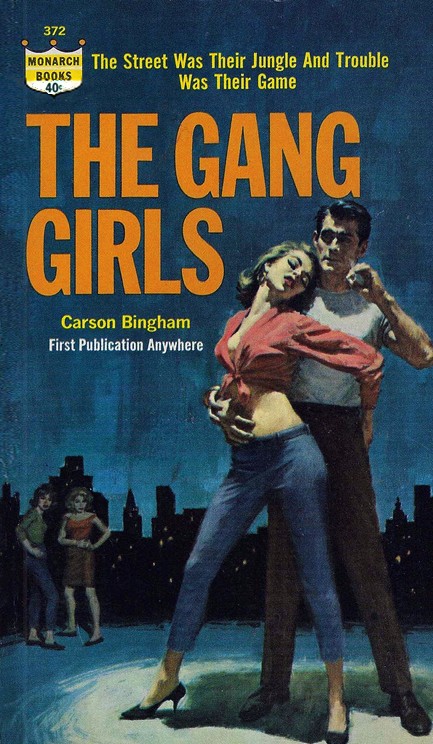 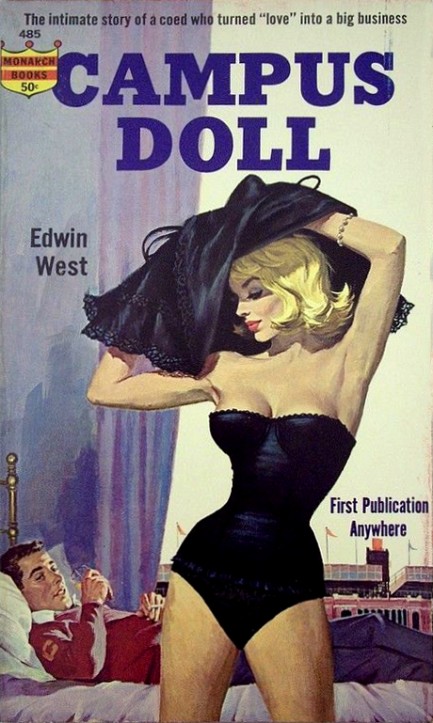  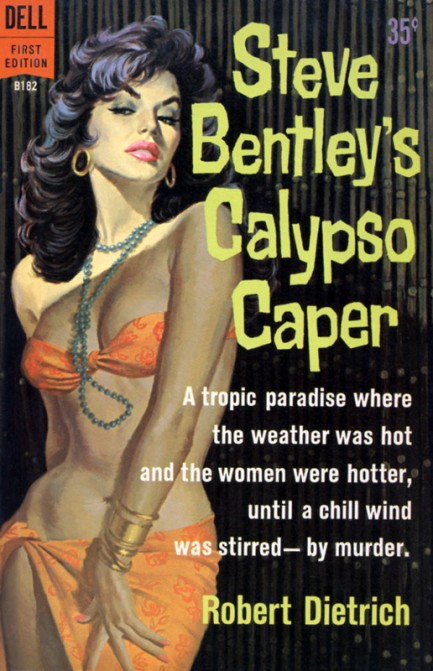 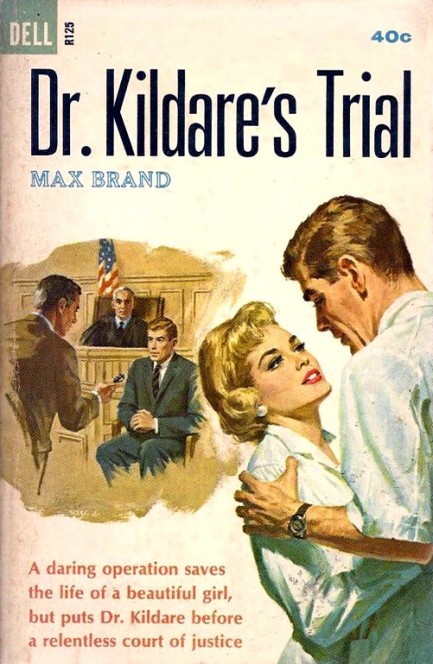 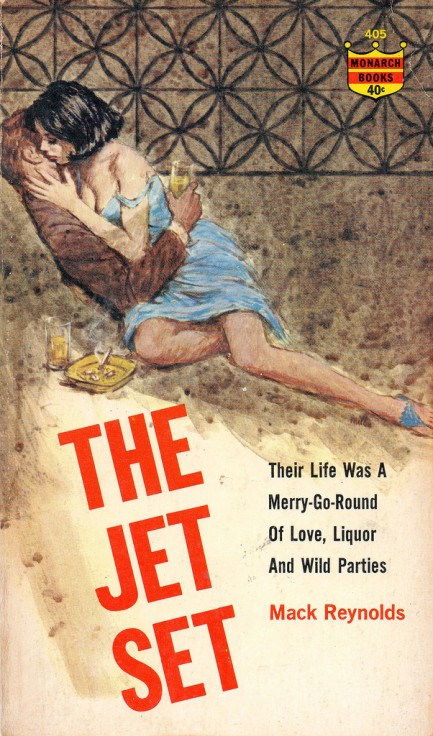  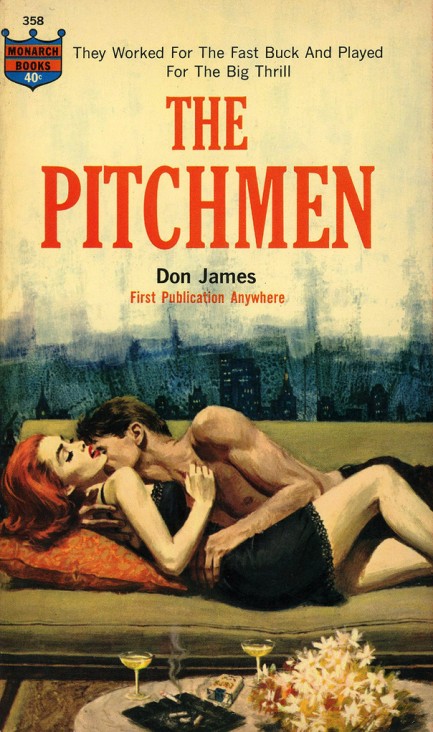
|
 |

The headlines that mattered yesteryear.
1985—Theodore Sturgeon Dies
American science fiction and pulp writer Theodore Sturgeon, who pioneered a technique known as rhythmic prose, in which his text would drop into a standard poetic meter, dies from lung fibrosis, which may have been caused by his smoking, but also might have been caused by his exposure to asbestos during his years as a Merchant Marine. 1945—World War II Ends
At Reims, France, German General Alfred Jodl signs unconditional surrender terms, thus ending Germany's participation in World War II. Jodl is then arrested and transferred to the German POW camp Flensburg, and later he is made to stand before the International Military Tribunal at the Nuremberg Trials. At the conclusion of the trial, Jodl is sentenced to death and hanged as a war criminal. 1954—French Are Defeated at Dien Bien Phu
In Vietnam, the Battle of Dien Bien Phu, which had begun two months earlier, ends in a French defeat. The United States, as per the Mutual Defense Assistance Act, gave material aid to the French, but were only minimally involved in the actual battle. By 1961, however, American troops would begin arriving in droves, and within several years the U.S. would be fully embroiled in war. 1937—The Hindenburg Explodes
In the U.S, at Lakehurst, New Jersey, the German zeppelin LZ 129 Hindenburg catches fire and is incinerated within a minute while attempting to dock in windy conditions after a trans-Atlantic crossing. The disaster, which kills thirty-six people, becomes the subject of spectacular newsreel coverage, photographs, and most famously, Herbert Morrison's recorded radio eyewitness report from the landing field. But for all the witnesses and speculation, the actual cause of the fire remains unknown. |

|
|

It's easy. We have an uploader that makes it a snap. Use it to submit your art, text, header, and subhead. Your post can be funny, serious, or anything in between, as long as it's vintage pulp. You'll get a byline and experience the fleeting pride of free authorship. We'll edit your post for typos, but the rest is up to you. Click here to give us your best shot.

|
|



















 With a setting in the endlessly fertile (for genre fiction) Louisiana bayou, and a narrative that wastes no time putting Cain in hot water, The Big Kiss-Off keeps the pages turning. It originally appeared in 1954 but the above edition was published in 1972 by Triphammer Books in Britain, with nice art by Ron Lesser borrowed from Robert Dietrich's (E. Howard Hunt's) 1962 Lancer Books thriller Curtains for a Lover. Notice how Triphammer erased part of Lesser's distinctive signature. That was obviously to keep the figure on their cropped art from looking crowded by the lettering, but we imagine it still annoyed Lesser. You can see a U.S. cover for The Big Kiss-Off in this collection of Day Keene novels we put together back in 2009.
With a setting in the endlessly fertile (for genre fiction) Louisiana bayou, and a narrative that wastes no time putting Cain in hot water, The Big Kiss-Off keeps the pages turning. It originally appeared in 1954 but the above edition was published in 1972 by Triphammer Books in Britain, with nice art by Ron Lesser borrowed from Robert Dietrich's (E. Howard Hunt's) 1962 Lancer Books thriller Curtains for a Lover. Notice how Triphammer erased part of Lesser's distinctive signature. That was obviously to keep the figure on their cropped art from looking crowded by the lettering, but we imagine it still annoyed Lesser. You can see a U.S. cover for The Big Kiss-Off in this collection of Day Keene novels we put together back in 2009.













































































